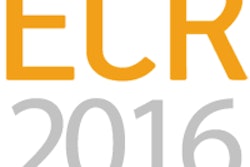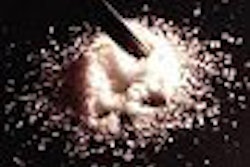(Radiology Review) Breath-hold fat-suppressed fast-recovery FSE T2-weighted images of the liver were superior to those of respiratory-triggered fat-suppressed FSE T2-weighted imaging, according to radiologists at David Geffen School of Medicine in Los Angeles. Dr. Jimmy Huang and colleagues had their research recently published in the American Journal of Roentgenology. They found that lesion visualization and characterization were similar when the two techniques were compared.
The authors retrospectively analyzed 46 patients who had MRI using both the breath-hold fat-suppressed fast-recovery FSE and respiratory-triggered fat-suppressed FSE T2-weighted sequences during a four-month period. "MRI was performed with a superconducting 1.5-tesla scanner with a phased-array coil as the receiver." Axial images were obtained with a section thickness of 8 mm, and T2-weighted sequences used a 2-mm interslice gap. The information of interest included number and location of lesions, a rating of confidence of detection, and lesion characterization (solid versus nonsolid).
Four weeks after the initial review, three of the radiologists decided upon the reference standard, using all radiology images, clinical information, and pathology results. "Thirteen patients had tissue diagnosis by either percutaneous biopsy or surgery," they reported. This second review gave them 78 lesions, which were suitable for further analysis. There were 29 solid, 47 nonsolid, and two indeterminate lesions
"In this study, we have shown that breath-hold fat-suppressed fast-recovery FSE T2-weighted images compare favorably with the established respiratory-triggered fat-suppressed FSE T2-weighted images," they stated.
"The breath-hold fat-suppressed fast-recovery FSE sequence is a robust T2-weighted sequence that may replace the conventional respiratory-triggered fat-suppressed FSE T2-weighted sequence for imaging the liver in most patients," the researchers concluded.
"Utility of Breath-Hold Fast-Recovery Fast Spin-Echo T2 Versus Respiratory-Triggered Fast Spin-Echo T2 in Clinical Hepatic Imaging"
Huang, Jimmy; et al
Department of Radiology, David Geffen School of Medicine, Center for the Health Sciences, UCLA
Medical Center, BL-428 CHS, Box 951721, Los Angeles, CA 90095-1721, USA
AJR 2005 (March); 184: 842-846
By Radiology Review
March 16, 2005
Copyright © 2005 AuntMinnie.com



.fFmgij6Hin.png?auto=compress%2Cformat&fit=crop&h=100&q=70&w=100)




.fFmgij6Hin.png?auto=compress%2Cformat&fit=crop&h=167&q=70&w=250)











